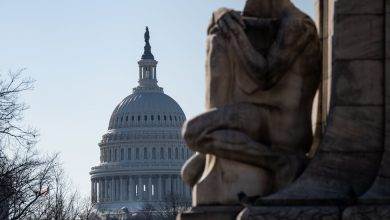DNA Researchers Name the Somerton Man, Australia’s 73-Year-Old Cold Case

Two researchers using forensic genealogy put a name to the so-called Somerton Man this week, saying they had finally solved the central mystery of an Australian cold case that has stymied investigators for 73 years and inspired theories about spies, smuggling, ballet and teeth.
The police in South Australia, who exhumed the man’s body last year, have not verified the identity and said they had no update to give on their own investigation. A spokesperson said they would comment after the results of forensic testing had been received.
But the researchers — an Australian professor of biomedical engineering who has studied the case for over a decade, and an American genetic genealogist whose company works on cold cases in many countries — say they have made a breakthrough. The name they came up with eliminates at least one leading theory, which linked the man to a woman the police interviewed in the 1940s, if not also the more colorful ideas about espionage and codes.
“We’re just saying this is what the DNA tells us,” the professor, Derek Abbott, who works at the University of Adelaide, said in an interview. “It’s up to the cops to make the legal determination of who this guy was.”
He and the genealogist, Colleen Fitzpatrick, president of Identifinders International, said that they began putting the puzzle together in February, thanks to recent advances in extracting DNA from rootless hair.
The hair itself had been caught in a plaster cast of the man’s face that was made more than half a century ago by investigators who hoped someone might recognize him.
The man had been found dead in December 1948, lying against a sea wall on Somerton Beach, near Adelaide in South Australia. He was dressed in a jacket and tie that had their tags cut off; a partly smoked cigarette lay on his collar; and his pockets held unused train and bus tickets, chewing gum, cigarettes, a box of matches, two combs and a scrap of paper. It had a line of type reading “tamám shud,” meaning “finished” in Persian.
At a train station not far away, the police found a suitcase that they traced to the man. In the suitcase, some of the clothing and a laundry bag had “T. KEAN” or “KEANE” written on it, but the police found no one unaccounted for by that name.
After the case gained publicity months later, a man turned in a classic book of Persian poetry, “Rubáiyát of Omar Khayyam,” that he said he found in his car, its last page torn out and letters scribbled on its back cover.
An autopsy could not determine a cause of death, though it found an enlarged spleen and a liver in poor condition, leading to speculation of poison, though no trace of any was found.
Over the decades, the allure of the Somerton Man mystery grewaround Australia and then among internet sleuths worldwide.
Some speculated that he was involved in the black market (because of the clipped labels and a boom in postwar smuggling); that he was a spy (because of Cold War tensions and the code-like letters); or that he was a former ballet dancer (because he had unusually strong calf muscles). Some wondered if his relatives might be found because of his distinctive ears and teeth.
By 2011, Dr. Abbott had spent years looking into the case, and he said the police let him take about 50 hairs from the death mask for analysis. In 2012 and 2018, he said, the University of Adelaide extracted some DNA from the hair. This February, Dr. Abbott and Dr. Fitzpatrick finally pulled enough with the help of a California company, Astrea Forensics, to begin a real search.
Using GEDmatch, a genealogical research site that was also used in the Golden State Killer case, they found a distant cousin on the Somerton Man’s paternal side. They then built out a family tree of more than 4,000 people.
“You find out who some of them are, you play with their details — it’s like Sudoku,” Dr. Fitzpatrick said in an interview. “You try and find the top match.”
As early as March, they noticed a man named Carl Webb, who went by Charles, with no date or documentation of death. They looked for historical documents, like electoral rolls, and began trying to vet some of the details contained in them. They found that Mr. Webb was born in 1905 in Victoria — the state that the police, in the ’40s, believed the Somerton Man was from — and had worked as an electrical engineer and instrument maker.
They also learned that his sister, who lived near his home in Melbourne, was married to a man named Thomas Keane.
But they needed more, and kept working with the DNA. They traced the man through his mother’s line to find a living relative and triangulate a match.
“In all this soup and ocean of DNA cousins, we were able to connect one of them to Carl’s father and one of them to Carl’s mother,” Dr. Fitzpatrick said. “You really kind of narrow it down so much it could be any one of Carl’s siblings — but Carl is the one with no documented death.”
Dr. Abbott said it was a first cousin, three times removed, in Australia, whose matching DNA provided a final clue. Between the DNA and the historical documents, he said, “we knew we had it.”
Both researchers said many major questions needed to be resolved, like the cause of death, what brought the man to Somerton Beach, and what his life was like. They are hoping that surviving relatives might provide more documents or accounts to fill in those gaps.
“There’s still lots of ongoing interesting research to do about his circumstances and who he was,” Dr. Abbott said. “That’s still on the to-do list.”
Their conclusion does knock out one theory that had entangled Dr. Abbott’s personal life with the Somerton mystery.
In 2009, he tried to find a woman whom the police interviewed in their original investigation because of a phone number in the poetry book. She had died, however, as had her son, a professional ballet dancer whose distinctive teeth and ears resembled the Somerton Man’s. Dr. Abbott managed to interview that man’s daughter, Rachel Egan, a meeting that led to courtship and then marriage in 2010.
Now, if the researchers are correct and it was indeed Charles Webb whose body was found on the beach all those decades ago, those physical features were just a bizarre coincidence, and Ms. Egan is not the granddaughter of the Somerton Man.
“I’m waiting for Derek to file divorce papers,” she said.
Her husband offered a quick clarification.
“She’s kidding,” he said.





